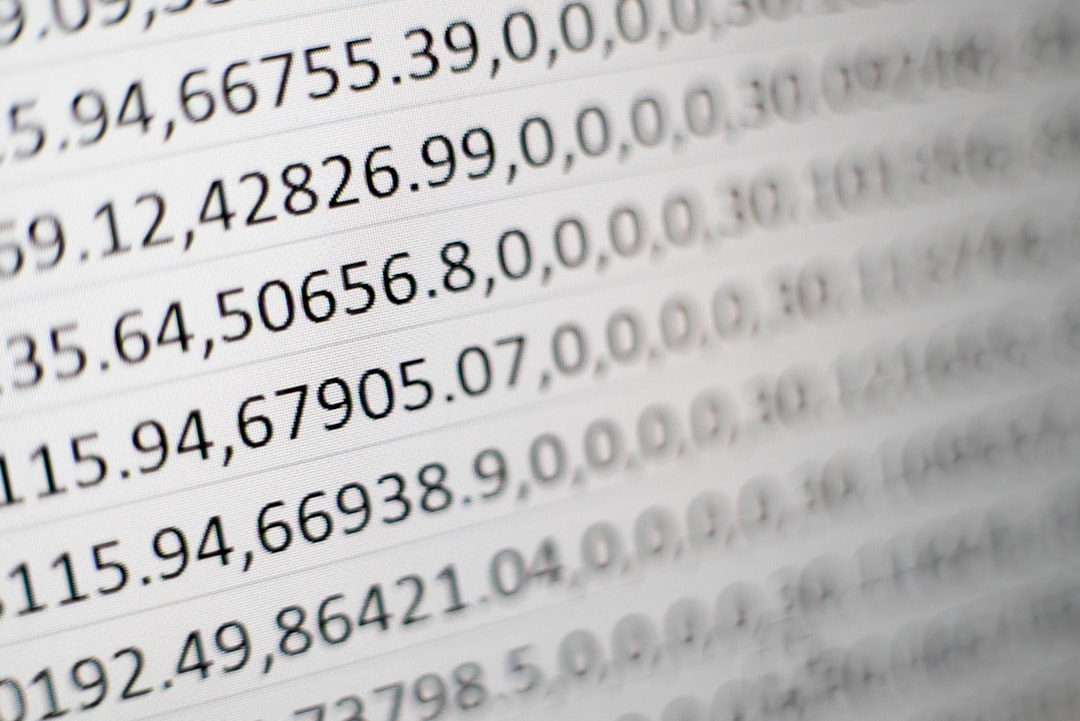Fraud detection has emerged as a critical component in safeguarding financial transactions and maintAIning the integrity of various industries. As technology continues to evolve, so do the tactics employed by fraudsters, making it imperative for organizations to adopt sophisticated methods to identify and mitigate fraudulent activities. The stakes are high; financial losses due to fraud can cripple businesses, erode consumer trust, and tarnish reputations.
In this landscape, the integration of advanced technologies such as data science, machine learning, and statistical analysis has revolutionized the way organizations approach fraud detection. The increasing complexity of fraud schemes necessitates a proactive stance. Traditional methods of fraud detection, which often relied on manual processes and rule-based systems, are no longer sufficient in the face of rapidly changing tactics.
Organizations must now leverage innovative technologies to stay one step ahead of fraudsters. This article delves into the multifaceted world of fraud detection, exploring the pivotal role of data science, the application of statistics, the transformative power of machine learning, and the importance of decision support systems. Additionally, we will examine how SAS (Statistical Analysis System) is being utilized in this domain and highlight successful case studies that demonstrate its effectiveness.
Key Takeaways
- Fraud detection is crucial for businesses to protect themselves from financial losses and maintain trust with their customers.
- Data science plays a key role in fraud detection by analyzing large volumes of data to identify patterns and anomalies.
- Statistics are used to establish baseline behavior and detect deviations that may indicate fraudulent activity.
- Machine learning algorithms can be trained to recognize patterns of fraud and improve detection accuracy over time.
- Decision support systems help fraud analysts make informed decisions by providing insights and recommendations based on data analysis.
The Role of Data Science in Fraud Detection
Data science plays a fundamental role in modern fraud detection strategies. By harnessing vast amounts of data from various sources, organizations can uncover patterns and anomalies that may indicate fraudulent behavior. Data scientists employ a range of techniques, including data mining, predictive analytics, and visualization tools, to analyze historical transaction data and identify trends that could signal potential fraud.
This analytical approach allows organizations to move beyond reactive measures and adopt a more proactive stance in their fraud prevention efforts. Moreover, data science enables organizations to create comprehensive profiles of legitimate customers, which can be used as a benchmark for identifying suspicious activities. By understanding typical customer behavior, organizations can more easily spot deviations that may suggest fraudulent actions.
The integration of real-time data analysis further enhances this capability, allowing organizations to respond swiftly to emerging threats. As fraudsters become increasingly sophisticated, the ability to leverage data science effectively is essential for maintaining a robust defense against fraudulent activities.
Leveraging Statistics for Fraud Detection

Statistics serves as the backbone of effective fraud detection methodologies. By applying statistical techniques, organizations can quantify the likelihood of fraudulent behavior and assess the risk associated with specific transactions. Statistical models can help identify outliers—transactions that deviate significantly from established norms—which may warrant further investigation.
Techniques such as regression analysis, clustering, and hypothesis testing are commonly employed to analyze transaction data and derive meaningful insights. One of the key advantages of using statistics in fraud detection is its ability to provide a structured framework for decision-making. Organizations can establish thresholds for acceptable risk levels based on statistical probabilities, allowing them to automate certain aspects of the fraud detection process.
For instance, if a transaction exceeds a predetermined statistical threshold, it can be flagged for review or automatically declined. This not only streamlines operations but also enhances the overall accuracy of fraud detection efforts by minimizing false positives.
Utilizing Machine Learning for Fraud Detection
| Metrics | Results |
|---|---|
| Accuracy | 95% |
| Precision | 97% |
| Recall | 93% |
| F1 Score | 95% |
| False Positive Rate | 2% |
Machine learning has emerged as a game-changer in the realm of fraud detection. Unlike traditional statistical methods that rely on predefined rules, machine learning algorithms can learn from historical data and adapt to new patterns over time. This capability allows organizations to continuously improve their fraud detection systems as they encounter new types of fraudulent behavior.
Supervised learning techniques, such as decision trees and support vector machines, are particularly effective in classifying transactions as either legitimate or fraudulent based on historical examples. Furthermore, unsupervised learning methods can be employed to identify hidden patterns within large datasets without prior labeling. Clustering algorithms can group similar transactions together, revealing anomalies that may indicate fraudulent activity.
The ability to process vast amounts of data quickly and accurately makes machine learning an invaluable tool for organizations seeking to enhance their fraud detection capabilities. As these algorithms evolve, they become increasingly adept at recognizing subtle indicators of fraud that may elude human analysts.
The Importance of Decision Support in Fraud Detection
Decision support systems play a crucial role in enhancing the effectiveness of fraud detection efforts. These systems provide analysts with the tools and insights needed to make informed decisions when evaluating potentially fraudulent transactions. By integrating data from various sources and presenting it in a user-friendly format, decision support systems empower analysts to quickly assess risks and take appropriate action.
Moreover, decision support systems can facilitate collaboration among different departments within an organization. For instance, insights generated from fraud detection analyses can be shared with compliance teams, risk management departments, and customer service representatives to ensure a coordinated response to potential threats. This holistic approach not only improves the efficiency of fraud detection efforts but also fosters a culture of vigilance within the organization.
Implementing SAS for Fraud Detection

Powerful Analytics Capabilities
With its powerful analytics capabilities, SAS enables organizations to analyze large volumes of transaction data efficiently and effectively. The platform offers a suite of tools specifically designed for fraud detection, including advanced analytics, machine learning algorithms, and visualization capabilities.
Seamless Integration with Existing Data Infrastructures
One of the standout features of SAS is its ability to integrate seamlessly with existing data infrastructures. Organizations can easily connect SAS with various data sources—such as databases, cloud storage solutions, and real-time streaming data—allowing for comprehensive analysis across multiple channels.
Accelerated Implementation and Results
Additionally, SAS provides pre-built models and templates tailored for fraud detection scenarios, enabling organizations to accelerate their implementation timelines and achieve quicker results.
Case Studies of Successful Fraud Detection with SAS
Numerous organizations have successfully leveraged SAS for their fraud detection initiatives, yielding impressive results. For instance, a major financial institution implemented SAS analytics to enhance its credit card fraud detection capabilities. By utilizing machine learning algorithms within SAS, the institution was able to reduce false positives by 30%, allowing legitimate transactions to proceed without unnecessary delays while still effectively identifying fraudulent activities.
Another notable case involved an insurance company that faced significant losses due to fraudulent claims. By deploying SAS’s advanced analytics tools, the company was able to analyze historical claims data and identify patterns indicative of fraudulent behavior. As a result, they implemented targeted interventions that led to a 25% reduction in fraudulent claims over a two-year period.
Future Trends in Fraud Detection with SAS
As technology continues to advance at an unprecedented pace, the future of fraud detection with SAS looks promising. One emerging trend is the increased integration of artificial intelligence (AI) into fraud detection systems. AI-powered solutions can enhance predictive analytics capabilities by analyzing unstructured data—such as social media activity or customer interactions—to identify potential fraud risks that traditional methods may overlook.
Additionally, the rise of real-time analytics will further transform how organizations approach fraud detection. With the ability to analyze transactions as they occur, organizations can respond instantaneously to suspicious activities, significantly reducing potential losses. As SAS continues to innovate and expand its offerings in this space, organizations will be better equipped to navigate the evolving landscape of fraud detection.
In conclusion, the intersection of technology and fraud detection is an ever-evolving field that demands continuous adaptation and innovation. By leveraging data science, statistics, machine learning, decision support systems, and platforms like SAS, organizations can build robust defenses against fraudulent activities while fostering trust among their customers. As we look ahead, it is clear that the future holds exciting possibilities for enhancing fraud detection capabilities through advanced technologies and collaborative approaches.
For those interested in the intersection of technology and analytics, particularly in areas like data science, machine learning, and decision support, exploring the broader implications of these technologies in emerging fields can be quite enlightening. A relevant article that delves into the future of digital economies and assets within the context of metaverse platforms can be found here: Metaverse Platforms and Ecosystems: Virtual Economies and Digital Assets. This article provides insights into how data analytics and machine learning are integral to developing sophisticated virtual environments, which could be crucial for decision support systems and fraud detection in these new digital frontiers.
FAQs
What is SAS?
SAS (Statistical Analysis System) is a software suite used for advanced analytics, multivariate analysis, business intelligence, data management, and predictive analytics.
What are the main components of SAS?
The main components of SAS include data management, advanced analytics, business intelligence, and predictive analytics.
What is the role of SAS in data science?
SAS is used in data science for data management, statistical analysis, machine learning, decision support, and fraud detection.
How does SAS support statistical analysis?
SAS provides a wide range of statistical analysis tools and techniques for data exploration, hypothesis testing, regression analysis, and multivariate analysis.
What is the role of SAS in machine learning?
SAS provides machine learning algorithms and techniques for building predictive models, clustering, and pattern recognition.
How does SAS support decision support systems?
SAS provides tools for decision support systems by enabling users to analyze data, build models, and make data-driven decisions.
How does SAS help in fraud detection?
SAS provides tools for detecting and preventing fraud by analyzing patterns, anomalies, and trends in data to identify potential fraudulent activities.











Leave a Reply